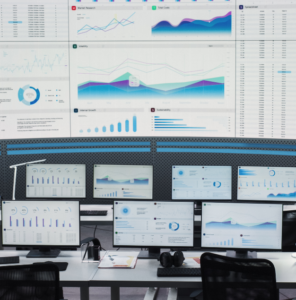29-10-2025
How Standardisation Helps Avoid Compatibility Issues in AV
How Standardisation Helps Avoid Compatibility Issues in AV
In modern audiovisual ecosystems, interoperability is a problematic time waster. As organisations scale and diversify their technology stack, compatibility issues in AV systems emerge far too often. At Lucid, our work across control, programming and system integration emphasises that AV standardisation is the key to eliminating those friction points, especially when deploying AV ecosystems that span rooms, buildings and countries.
Why Compatibility Issues in AV Arise
In a typical AV deployment, you might find equipment from multiple manufacturers, including displays, DSPs, lighting, shading, cameras and control processors. Without adherence to shared protocols or standards, devices can behave unpredictably. For example, one system may not respond, another may show degraded performance and yet another may suffer configuration conflicts. These are the very compatibility issues in AV that degrade user experience, increase maintenance burden and increase costs.
Beyond hardware diversity, system expansions and upgrades amplify the challenges. As new rooms or features are added, non-standard interfaces will demand bespoke adapters, which can make control and support a costly issue.
The Role of AV Standardisation
AV standardisation serves as the foundation on which diverse technologies can co-exist. By adopting open, widely accepted protocols and frameworks, organisations can:
- Ensure devices from different suppliers talk seamlessly.
- Simplify integration and reduce custom coding.
- Guarantee consistency across locations.
- Enable scalability without redesigns.
- Reduce troubleshooting, training time and support overheads.
AV standards and protocols such as Dante, AES67, SDVoE, IPMX and NMOS are at the forefront of this movement. For example, AES67 addresses audio interoperability across networked audio systems, facilitating smoother integration of DSP and audio gear. Meanwhile, the rise of AV-over-IP protocols shows how matrix switching and signal routing become software-defined and vendor-agnostic. Our “Why AV Standardisation Is Key” post, also emphasises that standard protocols reduce interface mismatches and improve system reliability. We believe that standardisation delivers the route from chaos toward a coherent, multi-supplier environment.
Standardisation in Practice
When designing or upgrading AV systems, standardisation is a guiding principle. Here is how it helps in practice:
- You define a control logic that aligns with protocols instead of custom drivers.
- Room controllers can support multiple device types transparently.
- When migrating or replacing components, the new ones “speak the same language”.
- Scaling from a single room to multiple rooms or buildings becomes smoother.
- IT and AV teams can manage and monitor via common frameworks.
At Lucid, our AV consultancy approach always starts with a standard-first mindset. We design systems so that the control architectures remain consistent and any future expansion or replacement is seamless.
In a world of evolving audiovisual demands, organisations cannot afford to ignore AV standardisation. When your control systems, DSP, video routing and networking all share standards, you reduce compatibility issues in AV and build AV systems that are reliable, maintainable and scalable.
If you are wrestling with AV complexity across rooms or sites, let our AV consulting team help you future-proof your organisation. Please contact us to explore how Lucid can bring standardisation to your AV system.





